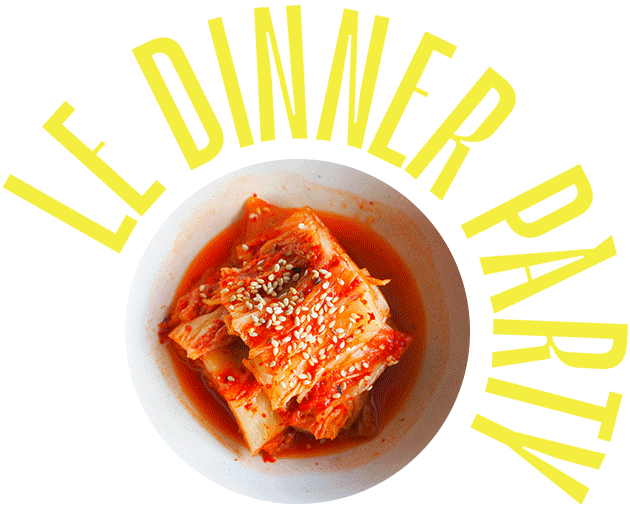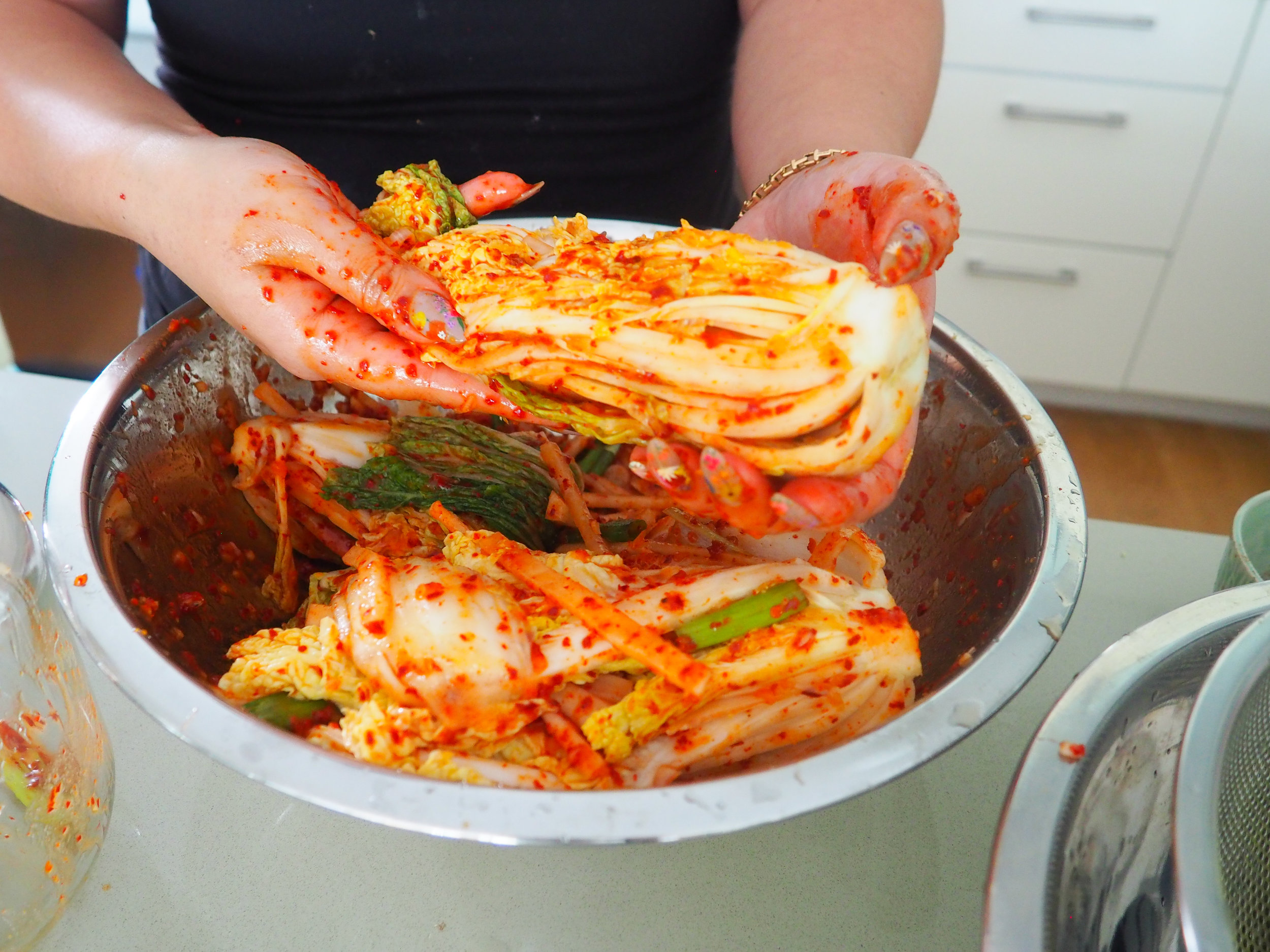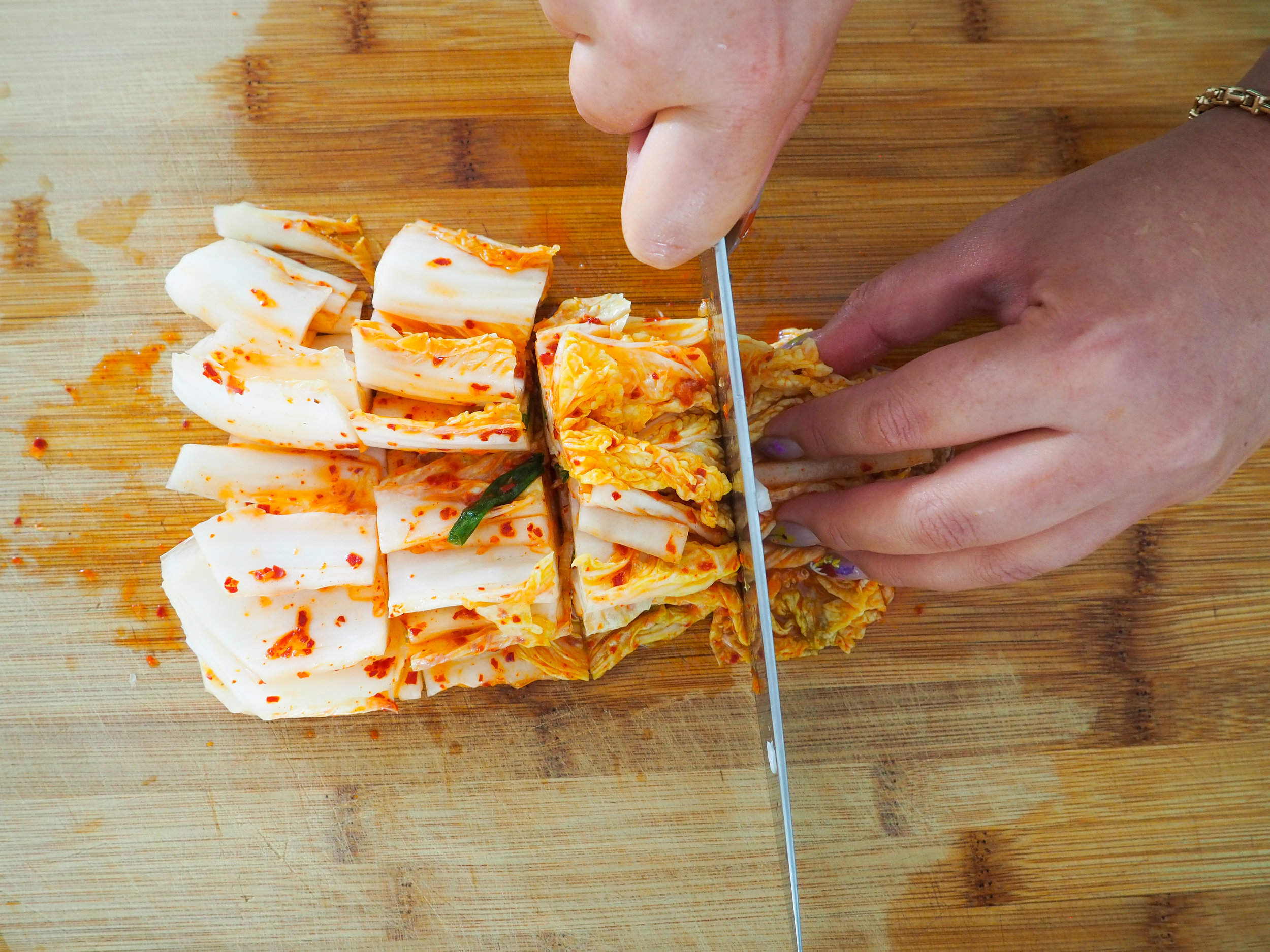Fresh Kimchi and Bossam (Korean Pork Belly)
Kimjang is the Korean tradition of making large quantities of kimchi with community members in the late fall to preserve and eat during the harsh winter months. To thank those who helped, the hostess usually serves a meal of fresh kimchi and boiled pork belly. This is my version of that meal.
Menu Type: Special Occasion & Labor of Love
How to Party
Setting the Table
Korean meals are served family style. Each person should have an individual bowl of rice, chopsticks/silverware, and a small plate for banchan (the different side dishes). The remaining dishes should be placed in the middle of the table so guests can help themselves.
Suggested Beverages
Serve with maekgoelli or soju if you can find it. Maekgoeli is a sweet and delicious Korean rice wine found in Korean grocery stores. Swirl the bottle gently to incorporate the sediment found at the bottom of the bottle. Soju is the national alcohol of Korea. Serve soju in shot glasses and turn the party.
Timeline for a 7:30 pm Saturday evening dinner
Wednesday evening (30 min.) - make a grocery list and plan meals for the remainder of the week/weekend
Thursday after work (30 min.) - pick up groceries
Saturday morning or Friday evening (2 hours) - salt the cabbage for kimchi and boil pork belly
Saturday
4:00 pm - make kimchi
5:00 pm - make ssamjang
5:15 pm - make cucumber kimchi
5:25 pm - wash lettuce & slice pork belly and return to fridge
5:30 pm - rinse rice and let soak - if you have a rice cooker you can go ahead and cook it. If you’re cooking rice on the stove - start at 7 pm.
6:00 pm - set the table, turn on your party playlist, have some wine, and get dressed for dinner...relax
7:20 pm - set out banchan (lettuces, ssam jang, kimchi, cucumber kimchi) on the dinner table and turn on broiler.
7:30 pm - greet guests, have some wine. Once all your guests have arrived, throw the bossam under into the broiler - watch it closely!
7:45 pm - seat people at the table and bring the bossam onto the table. Let your friends quickly capture for the gram and then put the phones away and enjoy.
Sunday - use any leftover pork to make soba noodle bowls with pork belly
Talking Points for Your Dinner Party
Kimchi dates back to the 13th century in Korea (kimchi is not a food trend as this dish is hundreds of years older than the USA).
Kimjang is the traditional process of making large quantities of kimchi with community members, usually women, to preserve and eat during the harsh winter months.
There are many types of kimchi (hundreds) made with a variety of vegetables. Not all kimchis are spicy.
Kimchi is preserved through a process called lacto-fermentation. Lactobacillus is a type of anaerobic bacteria that can survive in salt and without oxygen.
The salt kills harmful bacteria and allows lactobacillus to convert sugar/carbs from the cabbage into lactic acid.
The lactic acid gives kimchi (and other lacto-fermented foods) that signature sour and funky taste flavor.






